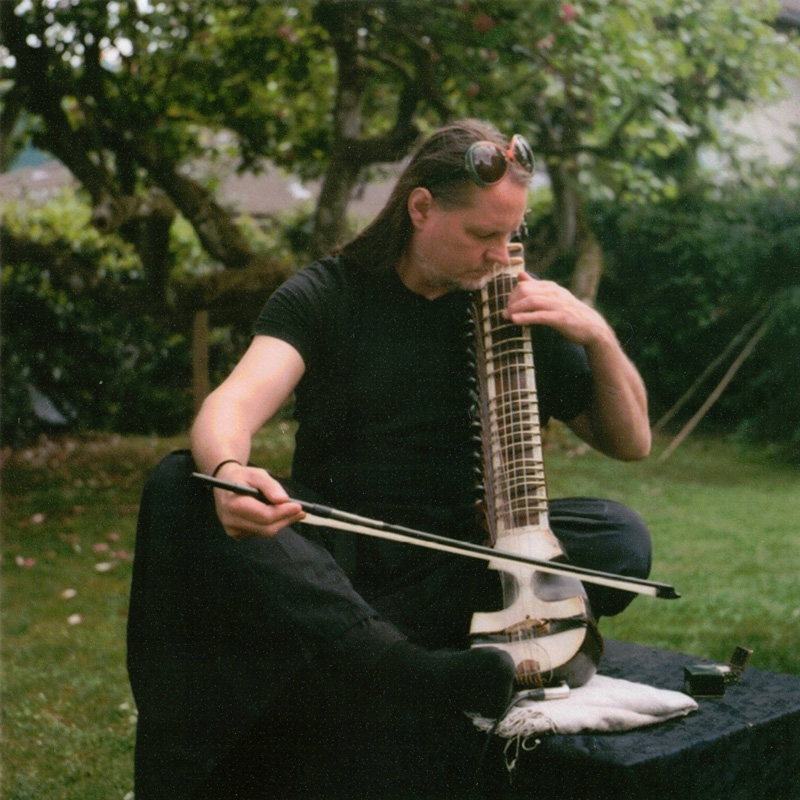
The Esraj, originating in the 17th century is by Indian terms quite a young instrument. It was derived from the Taus, played by the Sikh, which is considerably heavier and has a larger scale. 12-15 resonance strings are mounted on a wooden rack beside the neck, wich holds 18-20 metal frets. The soundboard is covered by goatskin, like a banjo, a horn bridge transports the sound into its body and reverbates in the hollow inside totally up to the neck. It usually has one main string and three bourdun strings. The Esraj is played with a bow (gaz), the typical Indian „meend“ and portamentos are performed while moving the hand alongside the strings.
Bendings, like on the sitar, are not applied. The Esraj has a sister instrument, the Dilruba. The Dilruba‘s shape is different, usually more square, the sympathetic strings are built in (like on the Sitar), surfacing the neck from below it additionally has four long sympathetics (tarb) with a snaring board under the main string and the bourduns. Esraj is played with a bow in sitting position on a carpet, but can be played on a stool as well while resting the body on the lap. Most players rest the neck on the left shoulder, others let the instrument stand freely, supported by the fingering hand.
The Esraj originates in folk – and spiritual music and was used for accompanying vocal recitals, though some notable players have used it as a solo instrument in raga. Rabindranath Tagore, Indias prominent son, also made use of the Esraj in his poetic songs. In the 20th century the Esraj has become quite rare, nearly extinct, but is gaining popularity since the 1980s thanks to „Gurmat Sangeet“, a Sikh Kirtan style spiritual music. Nowadays it is mostly found in Pakistan, Nepal and the Indian region Bengal.
taken from “the esraj handbook”, denovaire 2016
Das indische Streichinstrument Esraj (esraadsch) bietet einen wunderbaren weiten und obertonreichen Klang – geeignet sowohl für klassisch indische Musik, asiatische Volksmusik und Worldmusic als auch moderne, avantgardistische und experimentelle Interpretationen. Die Esraj wird auf einer Hauptsaite gespielt, besitzt drei Bordunsaiten und erzeugt mit 15 Resonanzsaiten einen schönen Hallraum. Sie erinnert an die indische, weitaus populärere Sarangi, vorallem in den Höhen, unterscheidet sich aber sehr in der Spieltechnik.
Der Korpus ist mit Ziegenfell überzogen, wie ein Banjo und über einen Horn-Steg wird der Sound bis in den hohlen Hals des Instrumentes transportiert. Die Esraj stammt aus Bengalen und wird auch oft in Nepal und Pakistan gespielt. Sie fand Eingang in die Lieder und Kompositionen des indischen Poeten Rabindranath Tagore. Heute gibt es nur sehr wenige klassisch indische Esrajmusiker und auch im Westen ist das Instrument nahezu völlig unbekannt.